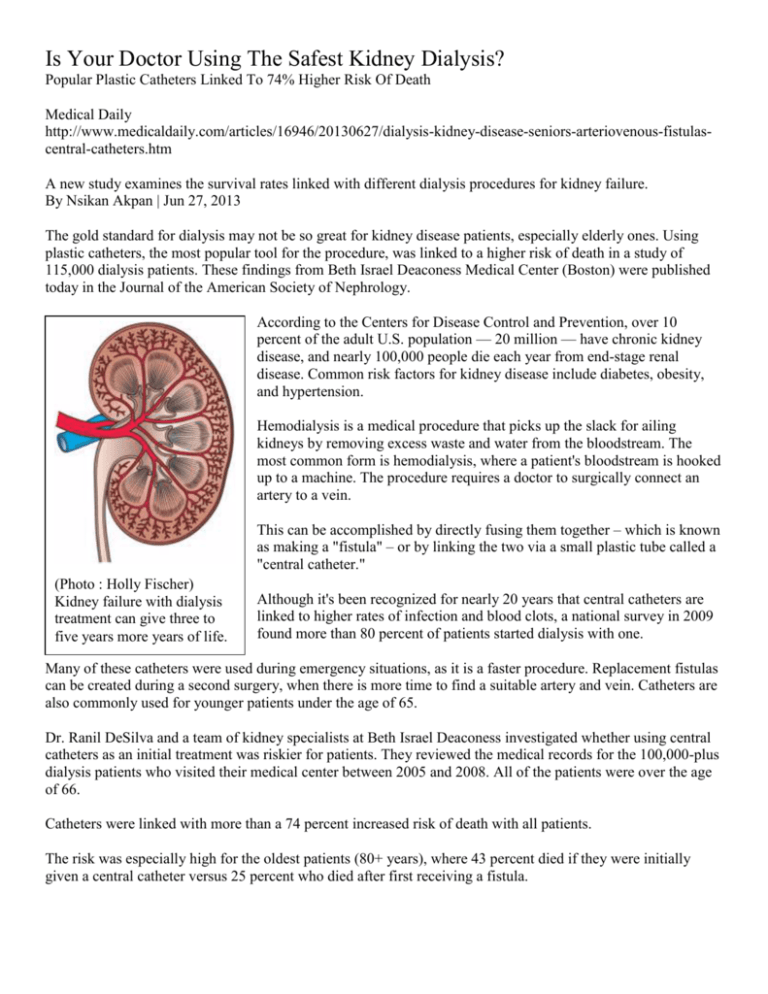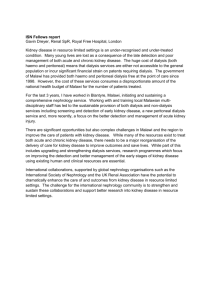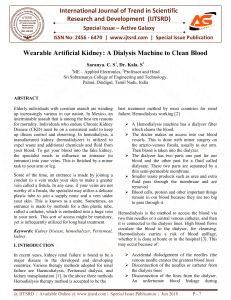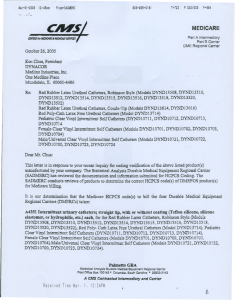Is Your Doctor Using The Safest Kidney Dialysis
advertisement

Is Your Doctor Using The Safest Kidney Dialysis? Popular Plastic Catheters Linked To 74% Higher Risk Of Death Medical Daily http://www.medicaldaily.com/articles/16946/20130627/dialysis-kidney-disease-seniors-arteriovenous-fistulascentral-catheters.htm A new study examines the survival rates linked with different dialysis procedures for kidney failure. By Nsikan Akpan | Jun 27, 2013 The gold standard for dialysis may not be so great for kidney disease patients, especially elderly ones. Using plastic catheters, the most popular tool for the procedure, was linked to a higher risk of death in a study of 115,000 dialysis patients. These findings from Beth Israel Deaconess Medical Center (Boston) were published today in the Journal of the American Society of Nephrology. According to the Centers for Disease Control and Prevention, over 10 percent of the adult U.S. population — 20 million — have chronic kidney disease, and nearly 100,000 people die each year from end-stage renal disease. Common risk factors for kidney disease include diabetes, obesity, and hypertension. Hemodialysis is a medical procedure that picks up the slack for ailing kidneys by removing excess waste and water from the bloodstream. The most common form is hemodialysis, where a patient's bloodstream is hooked up to a machine. The procedure requires a doctor to surgically connect an artery to a vein. This can be accomplished by directly fusing them together – which is known as making a "fistula" – or by linking the two via a small plastic tube called a "central catheter." (Photo : Holly Fischer) Kidney failure with dialysis treatment can give three to five years more years of life. Although it's been recognized for nearly 20 years that central catheters are linked to higher rates of infection and blood clots, a national survey in 2009 found more than 80 percent of patients started dialysis with one. Many of these catheters were used during emergency situations, as it is a faster procedure. Replacement fistulas can be created during a second surgery, when there is more time to find a suitable artery and vein. Catheters are also commonly used for younger patients under the age of 65. Dr. Ranil DeSilva and a team of kidney specialists at Beth Israel Deaconess investigated whether using central catheters as an initial treatment was riskier for patients. They reviewed the medical records for the 100,000-plus dialysis patients who visited their medical center between 2005 and 2008. All of the patients were over the age of 66. Catheters were linked with more than a 74 percent increased risk of death with all patients. The risk was especially high for the oldest patients (80+ years), where 43 percent died if they were initially given a central catheter versus 25 percent who died after first receiving a fistula. Page Two "In an era using more standardized quality outcome measures, we must remain cautious about generalizing measures to our growing elderly population", said Dr. DeSilva. "In the case of our study, a strategy that is clearly superior in young individuals requiring hemodialysis for kidney failure does not appear to be the clearly superior strategy for elderly individuals. It appears that the optimal vascular access choice should be tailored to the specific patient in the elderly population." Source: DeSilva RN, Patibandla BK, Vin Y, et al. Fistula First Is Not Always the Best Strategy for the Elderly. Journal of the American Society of Nephrology. 2013.











